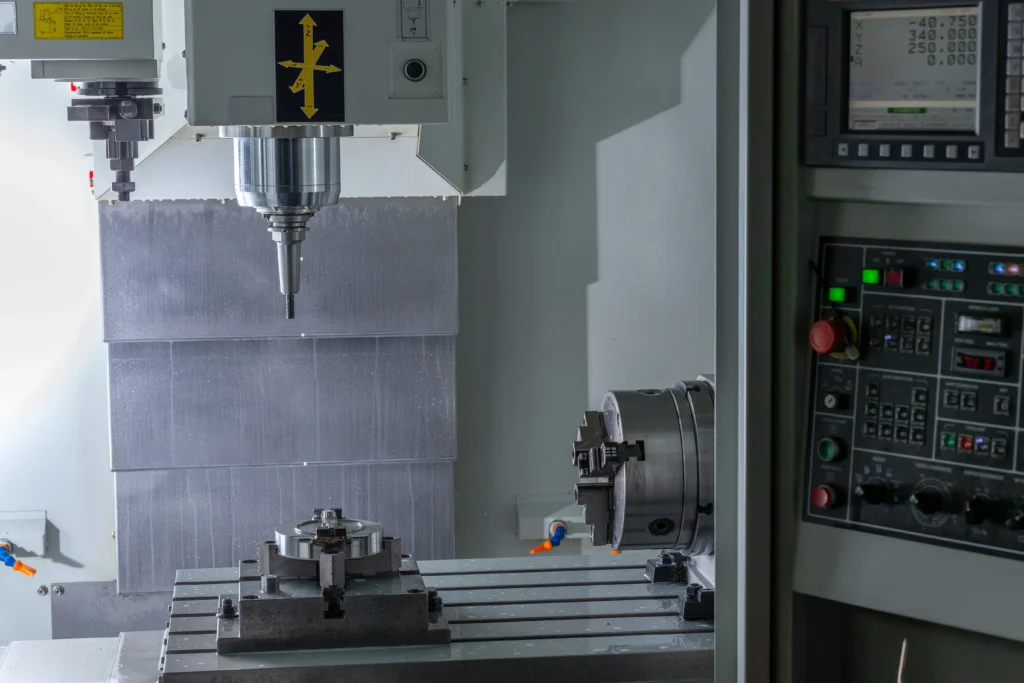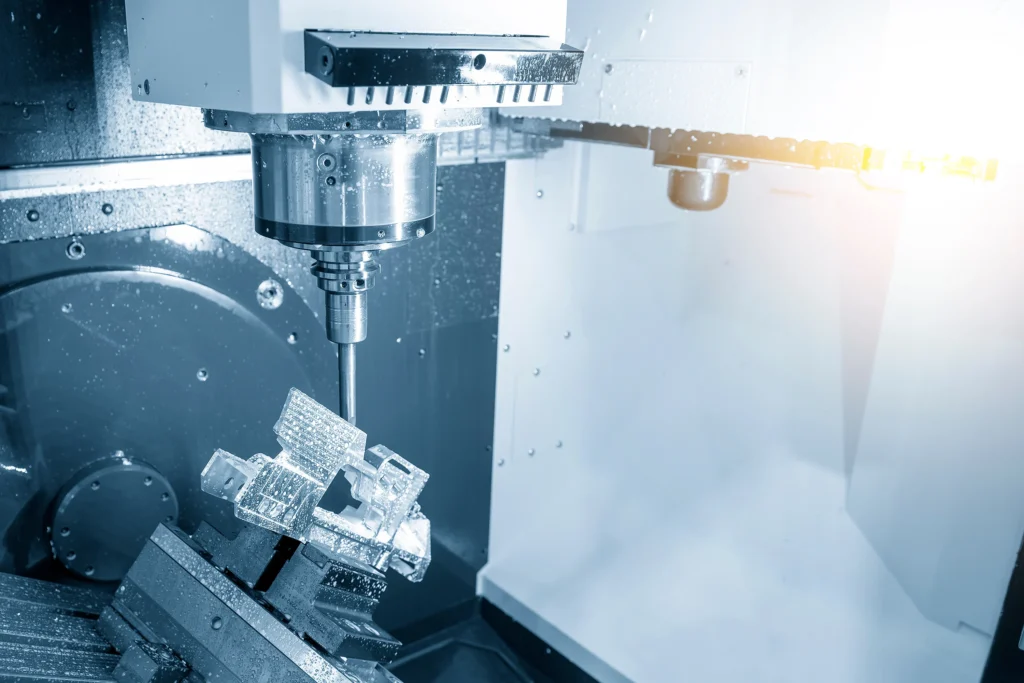Choosing the right CNC milling solution can significantly impact the efficiency, precision, and cost-effectiveness of your manufacturing process. With a variety of options available, understanding the differences between 3, 4, and 5 axis CNC milling machines is crucial in making an informed decision.
At Rapid Axis, we offer unique equipment formats and capabilities across all three types, making us an easy choice for your CNC milling needs. In this article, we will help you understand the key differences and benefits of each option to determine which is best suited for your specific requirements.
What is CNC Milling?
CNC (Computer Numerical Control) milling is a machining process that uses computerized controls to operate and manipulate machine tools. This process allows for the creation of complex parts and components with high precision. A CNC milling machine can move along multiple axes, with 3, 4, and 5 axis configurations being the most common.
Understanding the Different Axis Configurations
Each type of CNC milling comes with a new list of benefits and limitations. Often, these limitations will make the decision for you — does it make more sense to pay extra for 5-axis milling, or should you use a simple 3-axis CNC milling machine? Let’s look at the specifics of each axis configuration to help you make your decision:
3 Axis CNC Milling Machine
A 3 axis CNC milling machine is the most basic type, capable of moving along the X, Y, and Z axes. This configuration is ideal for straightforward tasks that do not require intricate details or complex geometries.
Benefits of 3 Axis CNC Milling:
- Cost-effective for simple projects
- Easier to program and operate
- Suitable for milling basic shapes and drilling holes
Limitations of 3 Axis CNC Milling:
- Limited capability for complex shapes and angles
- Less efficient for high-precision or intricate parts

4 Axis CNC Mill
A 4 axis CNC mill includes the X, Y, and Z axes, along with an additional rotational axis (A axis). This allows for more complex machining tasks, including operations on multiple sides of a part without the need for manual repositioning.
Benefits of 4 Axis CNC Milling:
- Greater flexibility and complexity than 3 axis milling
- Ability to machine angled features and parts
- Improved accuracy and efficiency for multi-sided machining
Limitations of 4 Axis CNC Milling:
- More complex and expensive than 3 axis machines
- Requires more advanced programming skills
5 Axis CNC Mill
A 5 axis CNC mill offers the most advanced capabilities, with movement along the X, Y, and Z axes, plus two additional rotational axes (A and B). This allows for complete machining of highly complex parts in a single setup. With these mills, the head of the cutter has complete freedom to move around the part.
Benefits of 5 Axis CNC Milling:
- Unmatched precision and capability for intricate parts
- Reduced setup time and increased efficiency
- Ability to machine complex shapes, contours, and features
Limitations of 5 Axis CNC Milling:
- Higher cost and complexity
- Requires specialized programming and operation skills

Choosing the Right CNC Milling Solution
Selecting the right CNC milling machine depends on the specific needs of your project. Here are some key considerations to help you decide:
Project Complexity and Precision
For simple, straightforward projects, a 3 axis CNC milling machine is often sufficient. However, if your parts require more intricate details, angles, or multi-sided machining, a 4 axis or 5 axis CNC mill may be necessary.
Production Volume and Efficiency
Consider the volume and efficiency requirements of your production. 5 axis CNC milling machines can significantly reduce setup times and increase throughput for complex parts, making them ideal for high-volume production runs.
Budget and Cost Considerations
While 5 axis CNC mills offer the most advanced capabilities, they also come with higher costs. Assess your budget and determine if the additional investment is justified by the benefits and efficiencies gained.
Why Choose Rapid Axis for Your CNC Milling Needs?
At Rapid Axis, we pride ourselves on offering a comprehensive range of CNC milling solutions to meet diverse project requirements. Here’s why we are the right choice for your CNC milling needs:
Versatility and Capability
Our unique equipment formats and capabilities span across 3, 4, and 5 axis CNC milling machines, allowing us to handle a wide variety of projects with precision and efficiency.
Expertise and Experience
With decades of experience in the industry, our team possesses the skills and knowledge to provide top-notch CNC milling services, ensuring that your parts meet the highest quality standards.
Customer-Centric Approach
We prioritize our clients’ needs and work closely with them to deliver tailored solutions that match their specific requirements. From initial consultation to final delivery, we provide exceptional customer service and support.
Commitment to Quality
At Rapid Axis, quality is at the core of everything we do. We employ rigorous quality control measures and use advanced technology to ensure that every part we produce meets your exact specifications.
Rapid Axis Has the Capabilities & Expertise to Meet Your CNC Needs
Understanding the differences between 3, 4, and 5 axis CNC milling machines is crucial in selecting the right solution for your project. Whether you need basic, multi-sided, or highly intricate parts, Rapid Axis has the capabilities and expertise to meet your needs.
Contact us today to learn more about our CNC milling services and how we can help you achieve precision, efficiency, and quality in your manufacturing process.
